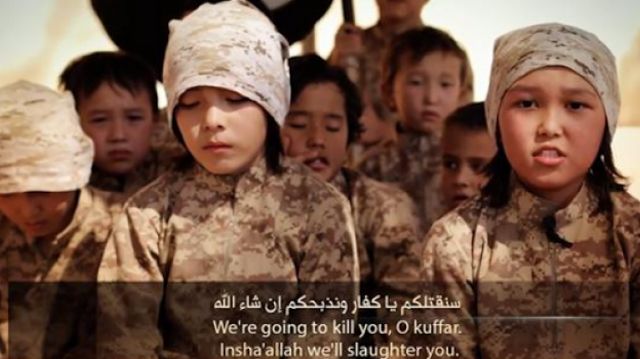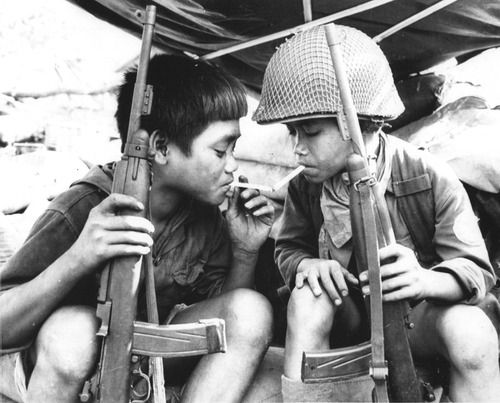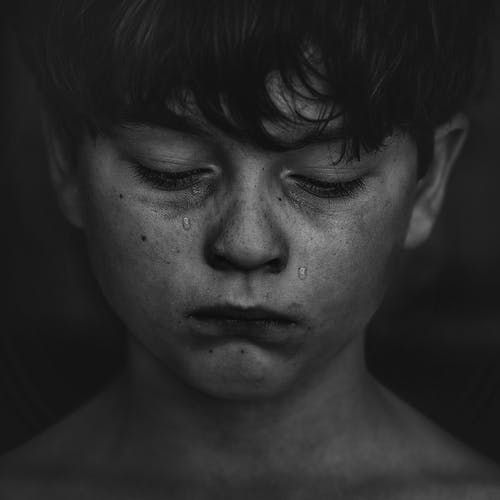Child Soldiers
Jul 18, 2019 • 18 views
The recruitment of children under the age of eighteen years old as soldiers, is one of the most heinous realism of the ethnic wars and conflicts around the world.
TheUN Secretary-General’s 2018 annual report, released in June 2018, listed 56 non-state armed groups and seven states armed forces for recruiting and using child soldiers in 2017 alone. An expansion in the quantity of checking instances of enlistment in strife influenced nations like the Central African Republic, South Sudan, Nigeria, and Syria, alongside child kidnappings in Somalia and ongoing exploitation of girls, point to the size of the test to secure kids in struggle.
The report uncovers 21,000 checked grave infringement against youngsters – from child enrollment to assaults on schools and medical clinics, sexual maltreatment and constrained detainment – yet these still likely just speak to a glimpse of a larger problem.

Their errands can differ, from soldiers to cook, spies, delegates and even sex slaves. Also, the utilization of youngsters for demonstrations of fear, including as suicide aircraft, has developed as a marvel of present day fighting. Every year, the UN gets reports of kids as youthful as 8 or 9 years of age related to armed conflict.
Regardless of their job, child soldiers are presented to intense dimensions of brutality – as witnesses, direct victims and as forced participants. Some are harmed and need to live with inabilities for whatever is left of their lives.
Young girls and teenagers are additionally enrolled and utilized by military and gatherings. They have vulnerabilities that comes with their biological sex and spot in the public eye and endure explicit results, including, yet not restricted to, assault and sexual brutality, pregnancy and pregnancy-related confusions, shame and dismissal by families and friends.

Children are vulnerable to most dangers that come their way, but they are easy to manipulate and mold into a particular role. This is what the military of both state and non-state forces take advantage of.The child soldiers are recruited through coercion or manipulation- some are abducted or forcefully enlisted and some are lured by fallacious words of glory and ‘right cause’. Some are there for they have nothing to eat and nowhere to go. Children of war orphaned are many taken under wing by these military groups. They sometimes end up in wars with guns bigger than them for the need to belong somewhere and to repay their ‘masters or chief’ in the military for taking care of them.
Many a time’s religious and ethnic affiliations are being controlled to increase sentiments of contempt or hostility — against kids just as grownups. Fights are battled from town to town and from road to road.
A prime example of this found in the Sri Lankan conflict where in 2003, Sri Lanka's rebel Liberation Tigers of Tamil Eelam (LTTE) kept on enrolling child soldiers in repudiation of worldwide law. UNICEF reports show that the LTTE selected 709 youngsters in 2003 and keeps on holding around 1,300 kids regardless of guarantees to discharge all kids inside its positions.
In India the intentional enlistment age is seventeen years and a half year. Despite the fact that there is no official data about youngsters being selected into the military powers there are claims that kids have been enrolled into government-bolstered against Maoist town resistance powers. Armed Conflicts in India are found in three noteworthy locales, the Maoist and security powers strife moved in inborn networks of Andhra Pradesh, Chhattisgarh and Jharkhand; the Jammu and Kashmir struggle zone, and clashes in the upper east states Assam, Manipur, Nagaland and Tripura. In spite of the fact that as far as possible for serving in a military power is seventeen years and a half year, numerous military private academies, for example, Rashtriya Indian Military College and The National Cadet Corps enlist kids between the ages of 11 years a half year and 13 years. The absence of appropriate birth registration or age demonstrating reports doesn't take into consideration the elimination of child soldiers as often the age of a recruit cannot be correctly determined.

Regardless how children are enlisted and of their jobs, child soldiers are unfortunate casualties, whose interest in strife bears genuine ramifications for their physical and emotional prosperity. They are usually subject to mishandle and the majority of them witness death, slaughtering, and sexual violence. Many are compelled to commit rough acts and some endure genuine long traumatising mental results. The reintegration of these kids into non military personnel life is a fundamental piece of the work to help youngster fighters reconstruct their lives.
As we celebrate the thirtieth commemoration of the Convention on the Rights of the Child and get ready for one year from now's twentieth commemoration of the Optional Protocol on the inclusion of children in armed conflict, the rights contained in those achievement records are under danger. Extended and high-force clashes, repeating spikes in savagery, activities to counter rough radicalism and cross-borders tasks by operations of various groups have kept on making kids far and wide the essential casualties of war.
